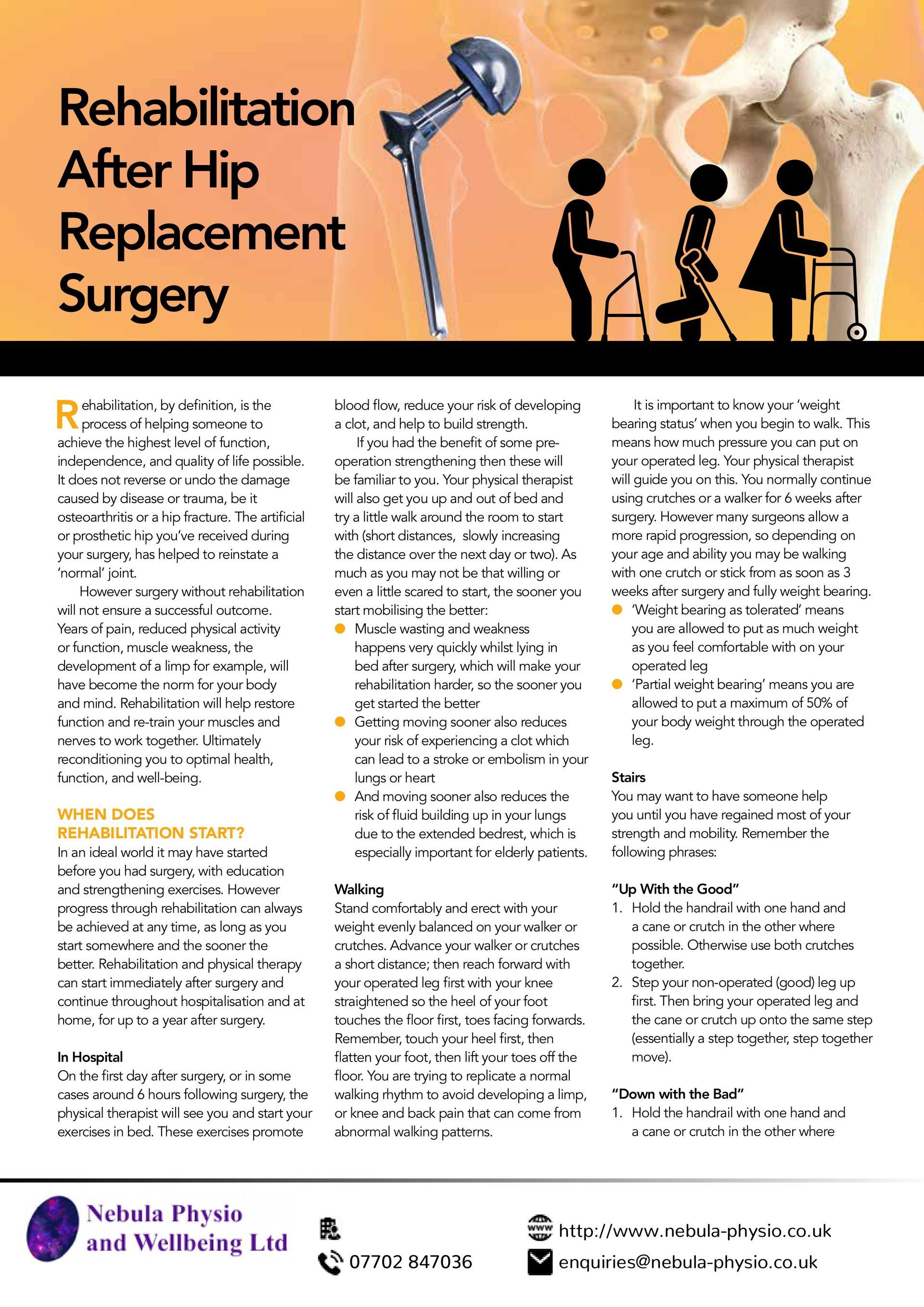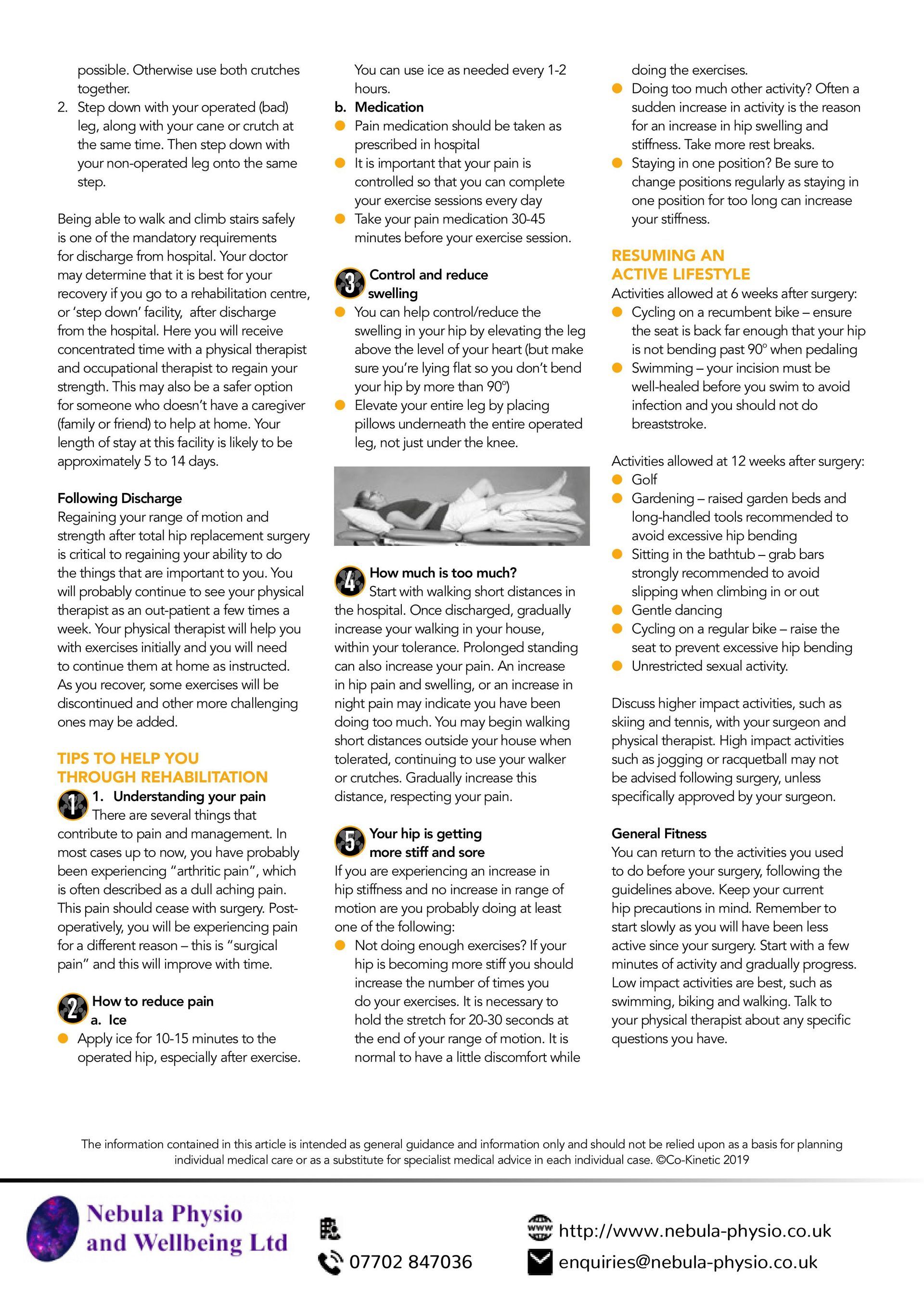Rehabilitation After Hip Replacement Surgery
Hip Replacement Surgery takes place after either trauma or years of suffering from hip joint arthritis, pain on movement, tight muscles and loss of daily activities.
We’d all like to think that surgery will provide that magic cure for our troubles, however surgery alone won’t be enough. Although you will have a new joint with no trauma/arthritis, it doesn’t automatically fix tight/weak muscles. After surgery a big effort is required to regain strength and lost skills.
Initially your post-surgery rehabilitation is all about controlling pain (take what your consultant has recommended!), reducing swelling and re-gaining range of movement. You will then turn your focus to strengthening and finding your way back into your daily activities.
Early Stages (First 2-3 weeks):
• Pain Management: Medications and ice packs help manage post-operative pain.
• Basic Exercises: Your physiotherapist will advise you of gentle exercises to prevent stiffness and promote blood flow.
• Assistive Devices: Walking aids, like crutches or walkers, are often used initially to support balance and weight-bearing.
Mid-Stage (Weeks 3-6):
• Gradual Progression: Activities increase gradually, including walking, standing, and stair climbing.
• Strengthening Exercises: Your physiotherapist will help you progress the strengthening of your hip and leg muscles.
• Occupational Therapy: You will be advised how to adapt activities of daily living, such as dressing, bathing, and cooking, to minimize stress on your new hip.
Late Stages (Beyond Week 6):
• Return to Work and Activities: The timing for returning to work or resuming hobbies depends on individual factors and job requirements.
• Advanced Exercises: As strength and mobility improve, your physiotherapist will help progress you back to activities such as swimming, hiking, or cycling.
• Long-Term Management: Continued physiotherapy and maintenance exercises are important for long-term health and preventing future issues.
Specific Guidelines and Precautions:
• Avoid certain movements: Such as crossing legs at the knees, bending the hip excessively, or reaching for items on the floor while sitting.
• Proper Posture: Maintaining good posture is crucial for preventing further strain on the hip joint.
• Weight-Bearing: Gradually increase weight-bearing on the new hip as tolerated, with the guidance of a physiotherapist/your consultant.
• Follow-up Appointments: Regular check-ups with the surgeon and physiotherapist are essential to monitor progress and address any concerns.
Return to activities can take weeks, months, or even a year depending on your individual circumstances and the type of work or activities you are looking to return to.
Check out the below leaflet for more information, advice and tips on rehabilitation after hip replacement surgery:
Key Message:
After hip replacement surgery you will need to spend time regaining muscle strength and lost skills. Physiotherapy can safely guide you through your recovery journey and help get you back to all the activities you want to be doing.
If you would like further advice on rehabilitation following hip replacement surgery, give us a call on 07702 847036
and speak directly to a Senior Chartered Physiotherapist or click the ‘Book Online’ button to make an appointment. Both in-clinic and virtual video appointments are available.
The Nebula Physio and Wellbeing Team







